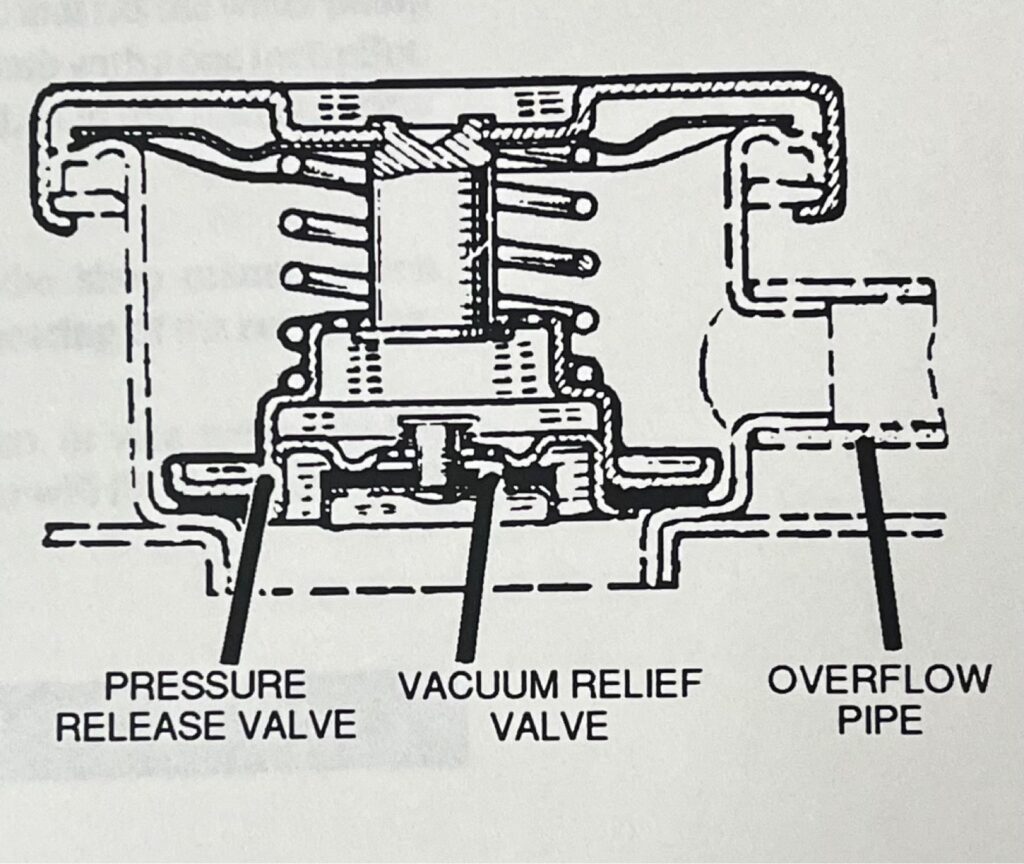Stock Tigers often have a habit of burping out coolant after a hot run. Tigers like to burp immediately after being shut off because the residual engine heat causes localized boiling within the engine block. In addition to being unsightly, this habit can be expensive due to the high cost of anti-freeze. Help your Tiger kick this habit by installing a coolant recovery system. This system is cheap (usually less than $10.00 at most stores) and will really help your Tiger keep its radiator full.
The stock Tiger came equipped with a pressurized cooling system operating at approximately 14 PSIG. The effect of pressurization is to raise the boiling point of the coolant. For example, at sea level, a 100% water coolant boils at 248 degrees F and a 50% water 50% Prestone coolant boils at 265 degrees F. The cooling system efficiency is increased due to improvements in coolant circulation (reduced vapor lock in water pump) and the extended operating temperature range of the coolant. This stuff is not new; most cars (even British cars!) have used some type of pressurized cooling system.

The spring-loaded radiator cap is designed to make a seal at both the top seat and a lower inside seat in the filler neck as shown in the sketch. An overflow tube connects to a point between these two seats. The stock Tiger radiator cap is equipped with a heavy, specially calibrated spring, which controls a pressure relief valve to seal off the cooling system from the overflow tube. This feature permits the system to pressurize itself automatically as the coolant expands when it is heated. When excess pressure builds up, the spring resistance is overcome and the pressure relief valve opens. The coolant and the steam escaping from the radiator through the overflow tube and onto the pavement relieves the pressure. The radiator cap also has a vacuum relief valve which opens automatically as the engine is cooling to prevent the formation of a vacuum in the system.
The coolant recovery system is an extremely simple set-up consisting of a reservoir bottle, which collects the “burps” from the overflow tube. Since the recovery system is designed to be air-tight (a special radiator cap is provided with the kit), the vacuum relief valve pulls coolant back into the radiator while the engine is cooling. The reservoir bottle is equipped with its own overflow in case the radiator overflow should exceed the reservoir capacity. Since the coolant is transferred between the radiator and reservoir, your Tiger will always have a radiator tank full of coolant.
Another advantage of the recovery system is its de-aerating capability. The stock Tiger allows air to enter the cooling system through the overflow tube. Aerated cooling water promotes corrosion as well as water pump vapor lock, or cavitation. The recovery system eliminates these problems because air is excluded from the system.
Installation of a coolant recovery system on the Tiger is simple, provided there is enough room under the hood for the reservoir bottle. Those Tigers with the STOA remote oil filter system have room where the stock oil filter used to be located. A neat set-up can be made with a Tiger windshield washer bottle and a mounting bottle cap, which fits the Tiger bottle. The kit contains hoses, 12/14 PSI special vacuum tight radiator cap, reservoir bottle cap and plastic reservoir (not used in installation). It’s a very popular kit in California and is usually available at auto parts discount stores.
